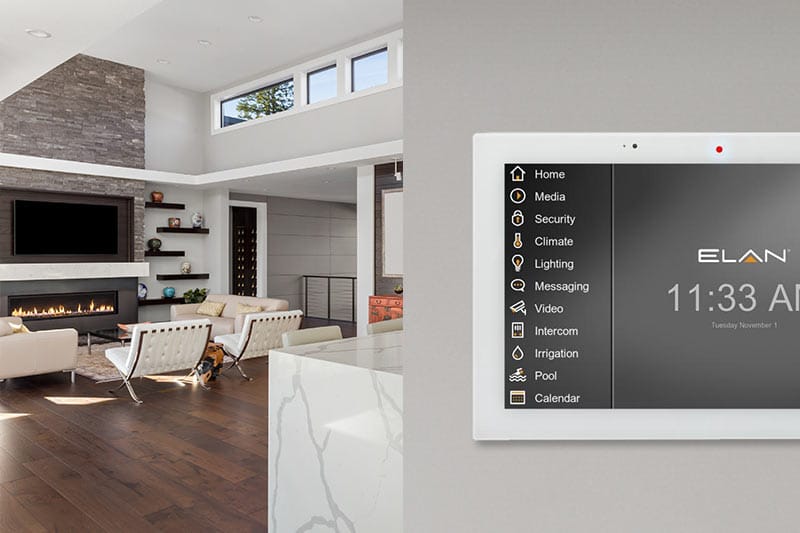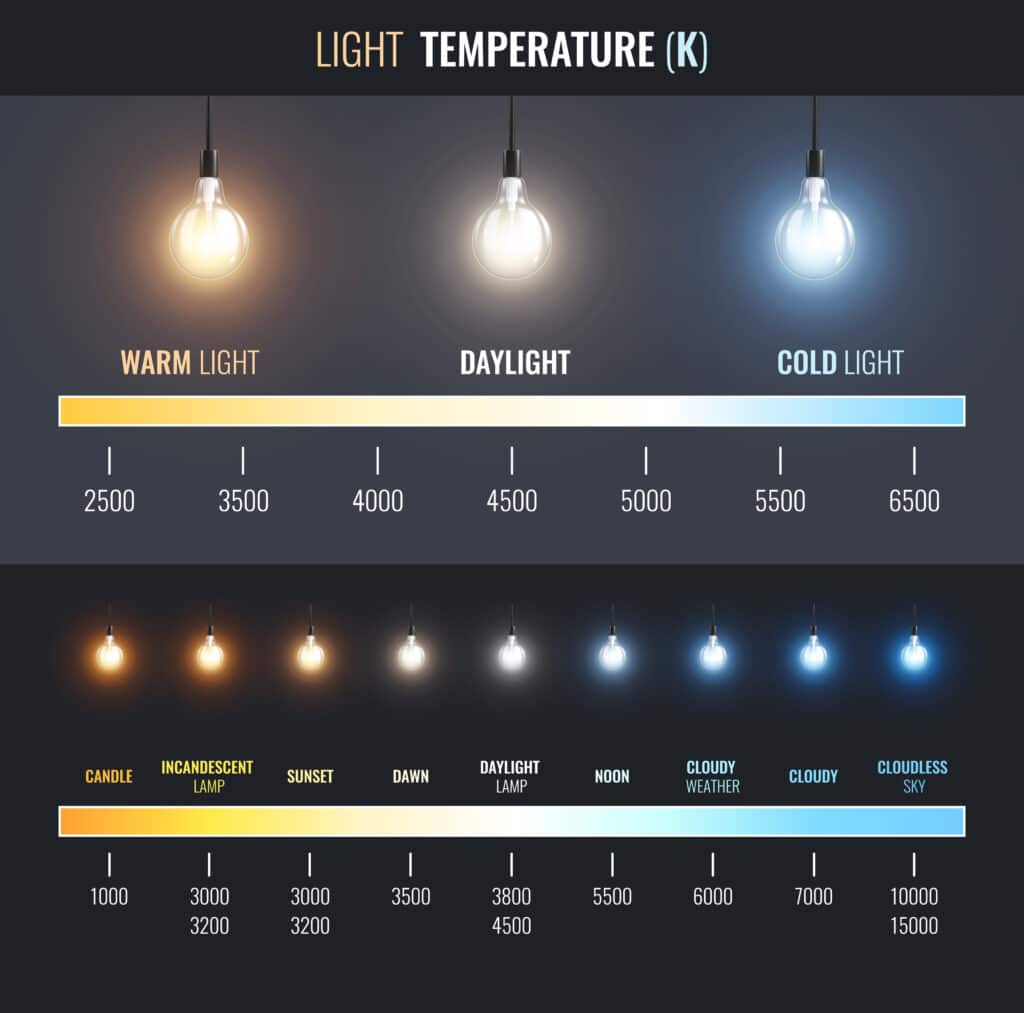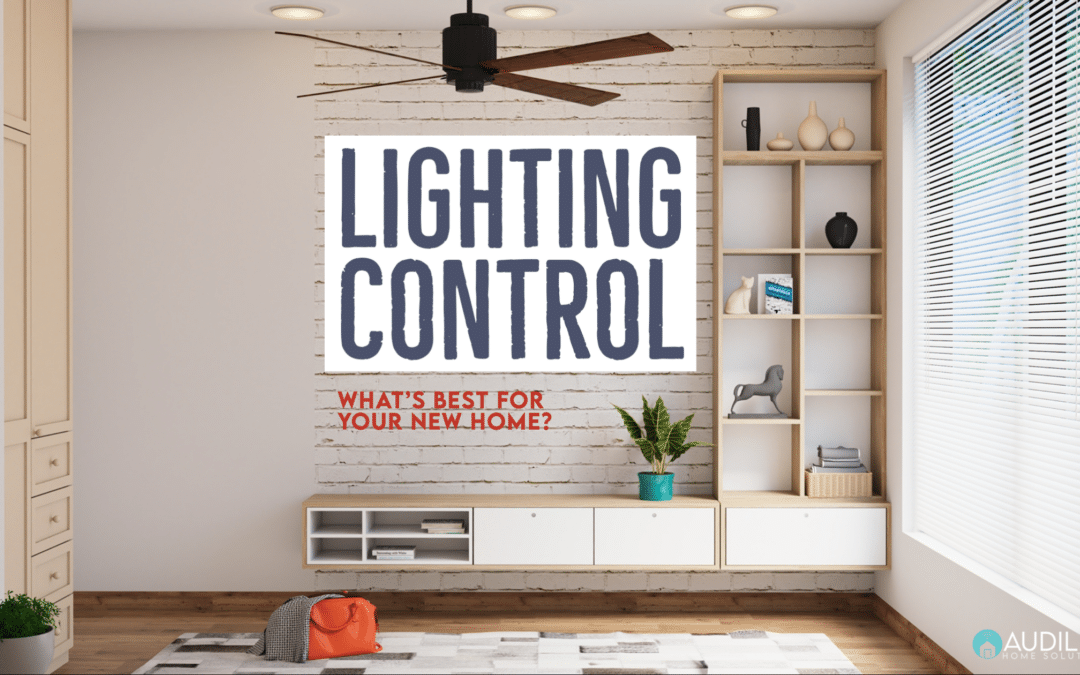Taking control of your home’s lighting systems is a great way to provide both security and convenience for your home. Automation can set the mood, enhance safety, make things accessible for those with disabilities, and more!
Automating your lights also gives you effortless control of when they’re on and off for example, during peak energy hours, you could have them turn on at dusk or dim during the brightest parts of the day. In my home, we automate the step lights installed for our stairs. In practice, they fade on at sunset and turn off thirty minutes before sunrise. It offers great peace of mind with young children walking around in the middle of the night.
These are a few reasons why you might want to automate your lighting, but what’s the best way to make that happen for your home? There are several types of automated lighting systems available on the market today. Which one is right for you?
When you are planning and pre-wiring your new smart home, you have the most choices available to you. Automation can be included in lighting fixtures, light switches, smart bulbs, and even panelized lighting systems.
This article will serve as an essential guide to help you start the conversation with your home technology integrator about which lighting control system might be right for you.
THE THREE TYPES OF LIGHTING SYSTEMS:

1. SMART BULBS
Back in 2013, Philips introduced a product line that changed the game in intelligent lighting forever. They called it “Hue,” and with its release, your lights weren’t stuck being a shade of white; if you could dream up a color, Hue was happy to set the mood.
Philips’s Hue system is a good starter for those who want to dip their toes into the world of automated home lighting.
The lights are controlled via an app on your phone or tablet, and can be programmed with different flash patterns and color schemes to make it feel like Christmas all year long; they also work great when synced to your TV.
Hue is still the dominant force in the consumer and DIY lighting space, but plenty of more affordable alternatives are now available.
There are a few negatives to opting for individual smart bulbs, one being their significant price premium. Also, if you choose bulbs using wi-fi technology, they’re notorious for slowing down wi-fi traffic and crowding your network.
Our take: If you’re going to DIY, stick to Hue or LIFX branded fixtures. Between the consumer systems available, they perform the best, have the most significant app support, and seem to be more reliable than other brands.
2. DIMMERS & SWITCHES

Z-Wave or Zigbee dimmers can be an economic middle ground. They offer all the core functionality necessary for automation but can suffer from lag as the system grows. So as your device count starts to climb higher than 25 dimmers or switches, It’s usually best to start looking at more robust offerings from Lutron, Vantage, or Ketra.
One of the significant advantages of these types of dimmers is they work using standard light bulbs. So you’re only paying for technology in one dimmer and not in every bulb. But, of course, you also miss out on color options and some of the more novel features of smart bulbs.
3. PANELIZED LIGHTING

The last type of lighting control is the most intensive but also has a few very distinct benefits.
Panelized lighting is the gold standard in custom lighting control.
In a typical home, light switches are installed directly in each room, and the individual fixtures or loads connect directly to them. This traditional approach is simple and does offer savings on wiring costs.
When a panelized lighting system is employed, all switches and dimmers are located in a central panel (usually in your home’s mechanical room) and then remotely controlled.
This configuration does require a little more wire and planning, but the payoff is huge.
Panelized lighting offers the unique opportunity to automate your entire home and significantly reduce the number of switches on the wall. While this may sound like a trivial upgrade, in a large estate with complex lighting layouts, moving from a bank of twelve light switches on a wall to only one or two has a substantial impact on design and aesthetics.

If you want to take it a step further, you can forgo the physical switches altogether and control the lights along with the rest of your home’s systems from a single touch panel in each room. In addition, lights can be grouped for easy control, offering the pinnacle of clean design and convenience.

COLOR RENDERING INDEX
When you’re trying to gauge the quality of a light source while shopping, the easiest way is to look for a metric called the “Color Rendering Index,” or CRI for short, this number refers to a light’s ability to display a full range of colors accurately. Look for bulbs or fixtures with a CRI of at least 90. A high CRI is not only better for the brain but also goes a long way towards making people look their best in photos or videos.
Human-Centric Lighting can improve your health & wellness.

Human-centric lighting or HCL is a splashy term used to describe lighting that complements the human body’s natural circadian rhythms. In 2021, a modern human now spends over 80% of their time indoors and under artificial light.
Before the invention of the light bulb, routines were largely dictated by the availability of natural light. The rise of the sun signaled to the brain it was time for work. This bright white light naturally had an energizing effect on the human body. Conversely, the warm orange light of the sunset signaled an end to activities for the day.
HCL seeks to replicate that naturally occurring change using tunable LED lights. It accomplishes this goal by matching color temperature indoors to be similar to the light from the sun outdoors.
WHAT IS COLOR TEMPERATURE?

At its simplest form, color temperature refers to the frequency at which light is emitted. It’s expressed as a value in “Kelvin” or “K” for short. You’ve probably noticed some light bulbs cast a bright blue light, while others, like candlelight, have a soft orange hue. Generally speaking, 5600K is considered to be “daylight” balanced lighting while 2700K is Warm White or Tungsten.
HUMAN-CENTRIC LIGHTING IS NOT JUST ABOUT IMPROVING OUR CIRCADIAN RHYTHMS, HOWEVER; IT ALSO BENEFITS YOUR PRODUCTIVITY.
The NIH conducted a study in 2012 which verified the positive effects of higher color temperature on both alertness and individual performance. HCL assists our bodies by naturally aligning with sunlight during the day, thus helping us get more sleep at night.
If you’re looking for lighting control or home automation in the Nashville, TN area, please don’t hesitate to REACH OUT. We’d love to help!
Want to find out more about Home Technology for your new home?
Read our “Before You Build – Technology Guide“
PROUDLY SERVING: BRENTWOOD, FRANKLIN , NOLENSVILLE, BELLE MEADE , NASHVILLE , TN & MORE

